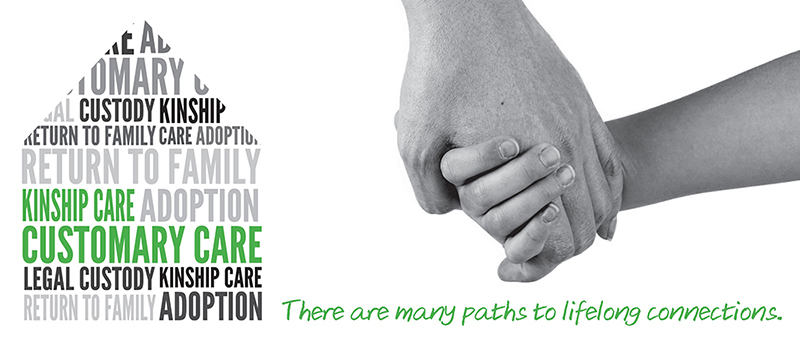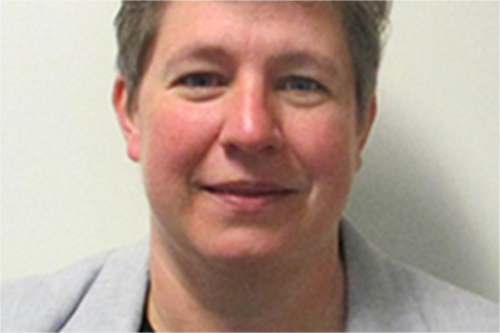The child welfare sector has been identifying kin families as a placement option for children and youth who can’t live with their immediate families for decades, but kin has continued to lag behind adoption and foster placements. Is the new Child, Youth, and Family Services Act (CYFSA) going to change this?
Yes, the CYFSA’s emphasis on the importance of identity and cultural connections should push kin placements to a new level. It is clear right from the preamble that children need, wherever and whenever possible, to stay connected with their family systems and cultures. This should mean increased utilization of kinship placements and supports beyond what was achieved through previous amendments.
What are some of the specific provisions in the CYFSA that will help guide Children’s Aid Societies (CAS) to prioritize kin?
As I already mentioned, it starts with the preamble which sets the philosophy and priorities for the legislation and can be very influential in interpreting the Act. The preamble speaks to the need to respect the diversity of children and families, to address systemic racism and barriers, and to maintain connections to their communities. Kin and extended families are likely the best way to achieve those goals. The preamble also raises the prominence of the child’s voice. In my experience, most children want to stay connected to their family systems. The link between the child’s voice and kin may not appear direct but it is a connection that I try to keep in mind.
Besides the preamble can you identify any other provisions that will have the effect of prioritizing kin placements?
Section 2 provides a new definition of extended family for First Nations, Inuit and Métis children which includes any member of a band or community of which the child is a member or with which the child identifies. Section 109 requires Children’s Aid Societies to choose residential placements for FNIM children, if possible, with a member of the child’s extended family. Together, they reinforce how broad the obligation is to prioritize placements which maintain kin connections. Section 109 also directs CASs to consider race, ancestry, place of origin, colour, and ethnic origins among other identity characteristics when choosing placements for all children in care. Section 74 also includes an expanded set of identity characteristics including race, ancestry, place of origin, colour, and ethnic origins in the “best interests” test, which also now includes the voice of the child as a mandatory factor. The result is that everything that makes the child who they are must be considered when making decisions for children. This has to mean an increased focus on family systems.
You noted at the beginning of the interview that the previous Act had specific provisions that were intended to increase the use of kin placements, but that these were not always used as much as intended. What is interfering with the effort to prioritize kin families in child welfare?
I think there have been pockets of resistance connected to child welfare’s traditional thinking that the best thing for kids in risky situations is to give them a better life by putting them in nice, white, middle class homes. Some of that thinking lingers. Getting the sector as whole to assess risk in a different light is a process that doesn’t just happen overnight.
Are you saying that racism is playing a role in the child welfare sector’s resistance to kin families?
Data tells us that racialized kids are overrepresented in foster care. The sector is starting to look at systemic racism and the role it plays in all aspects of child welfare, including why fewer racialized kids remain in their family systems. There are a myriad of questions to be considered such as: Why do some workers think a black child is better off in an affluent white foster home than a less affluent kin home? Is systemic racism embedded in our notions of permanency such as the traditional view of adoption as the gold standard for permanence? Would custody with kin and a more fluid family support system most often be a better solution?
How does the CYFSA assist in addressing this embedded, systemic racism?
By emphasizing community and cultural connections, the CYFSA requires CASs to balance the inevitable harm caused when removing a child from their family system against the risk that leaving a child in marginal placement might pose. This is reinforced by the learnings from the work on Truth and Reconciliation for Indigenous families, to feedback obtained from youth, to outcome data which demonstrates the levels of harm caused by removing children and youth from their family systems. In light of the preamble’s admonition that awareness of systemic barriers and racism and the need to address them should inform service delivery, the CYFSA requires us to acknowledge and face racism head on in order to work more effectively and collaboratively with our diverse communities.
Some front-line supervisors say that the CYFSA’s focus on timelines and consent is a barrier to making kin families the priority for placements.
Timelines for finding permanent placements can create challenges as finding kin, completing assessments, and building family support systems means more work and takes longer than using a pre-approved foster placements. Part of the answer is to be more consistent and insistent about asking questions about family supports and kin earlier in the process.
The focus on consent can also be a barrier. It is interpreted by many to mean that a caregiver’s consent is required to do extensive kin searching. However, the Act states that when a matter is in court, the court shall consider whether it is in the child’s best interest to place a child with a relative or member of a child’s extended family or community. To do this adequately, you need to be able to search for kin with or without consent. Working through the new privacy regime in Part X may assist in developing a more consistent framework regarding this issue. Again, part of the solution is doing a better job of having early conversations with parents about their family systems and engaging families in our work.
How would you say you are stepping in differently as legal counsel as a result of the new CYFSA?
One of the ways I stepped in in my previous role as Senior Legal Counsel was by not letting the agency off the hook when faced with pushback about doing late or multiple kinship assessments. I have said that we sometimes weaponize “attachment” to avoid assessing kin. Clearly attachment is important, however, it should not be used as justification to avoid kinship assessments, particularly when there are race or cultural considerations. As legal counsel, I have stepped in to make sure that we do not discourage kin plans or avoid assessing them when we happen to like the foster parents who put in an adoption plan and pre-determine that their plan is better.
What advice do you give agencies and their staff on supporting the CYFSA’s direction on kin?
Although it is a huge challenge in times of financial restraint, allocation of sufficient resources is crucial because kin work takes time to do well. I would also encourage agencies to build a culture that doesn’t back down from the philosophy that, as a rule, kids do better in their family systems. It takes consistently strong and unified leadership across roles and departments to overcome the pockets of resistance and confront prejudice and racism when it arises. Overall, agencies and staff need to accept that kin placements add complexity to the work, but a child’s life is complex stuff. You don’t want to miss the complexity.


You must be logged in to post a comment.